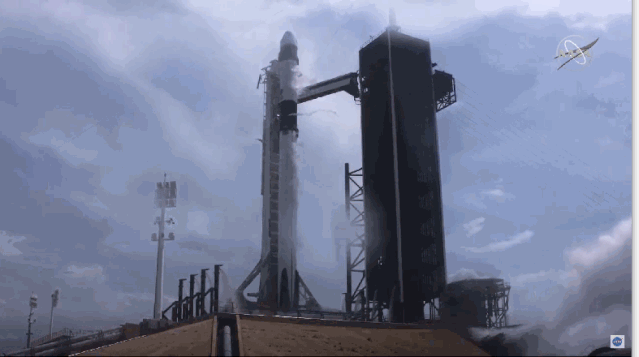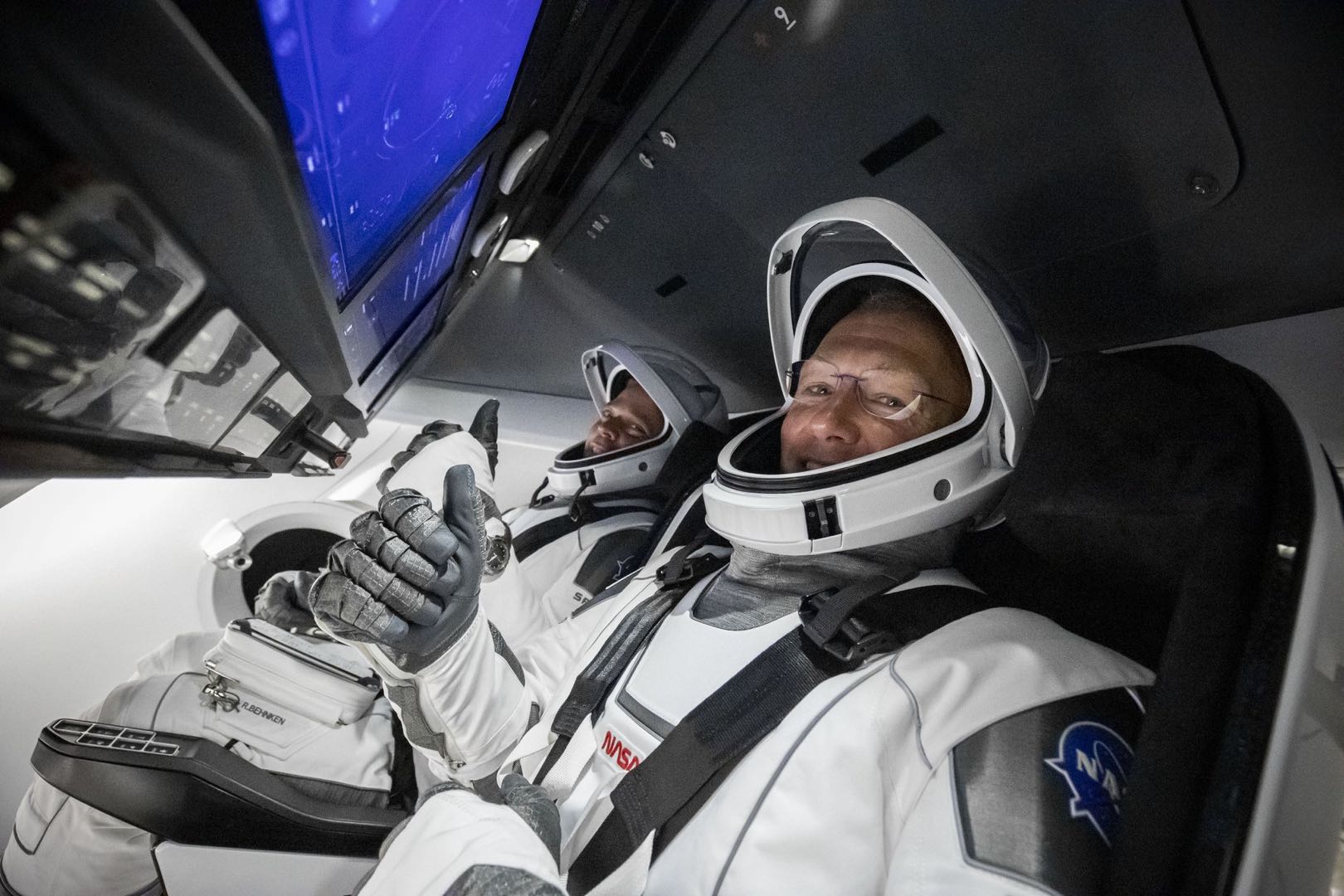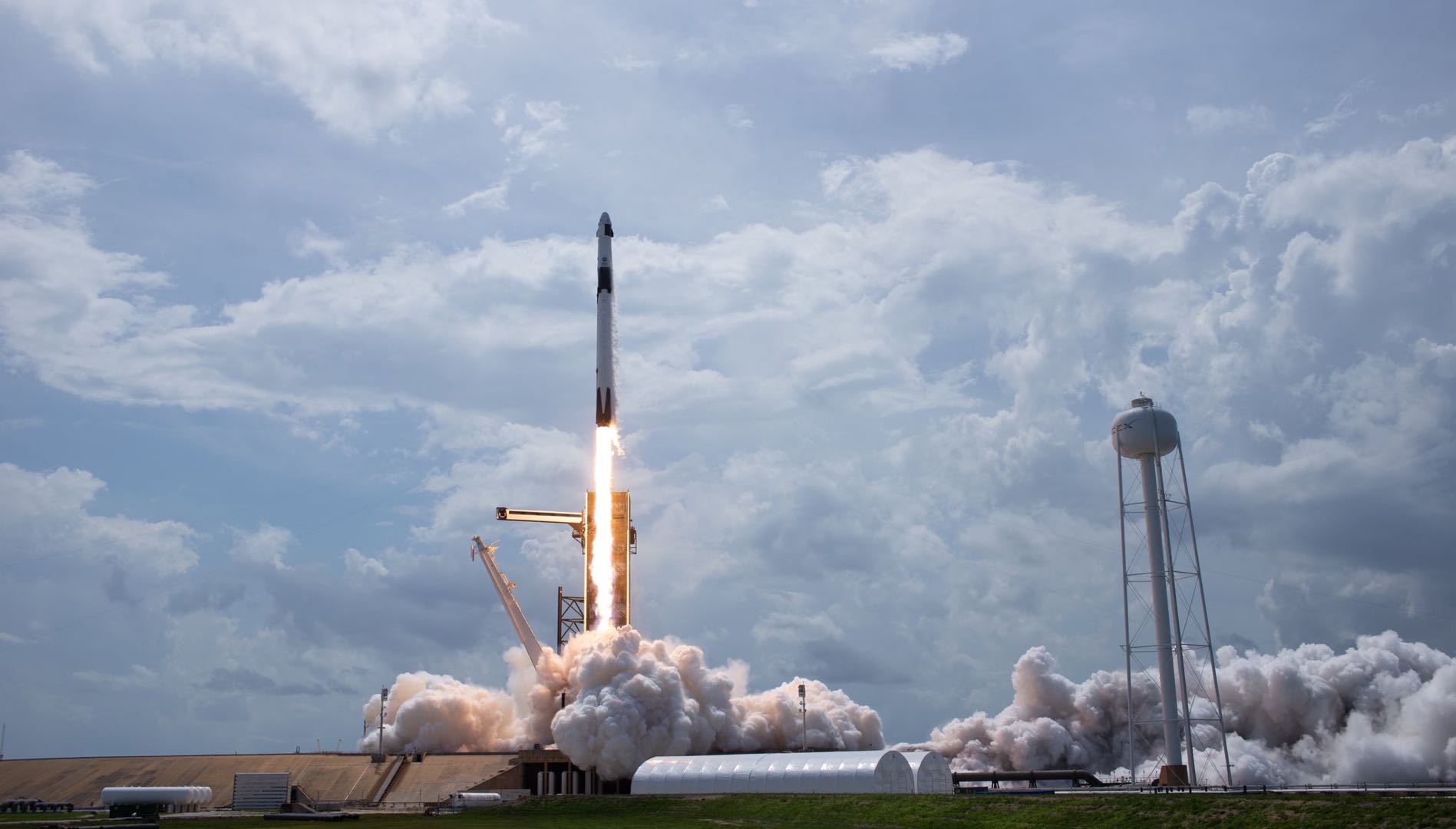 The ninth manned spacecraft was born in the history of human spaceflight: SpaceX manned dragon spacecraft.
The ninth manned spacecraft was born in the history of human spaceflight: SpaceX manned dragon spacecraft.
At 15:22 on May 30, EST, the Falcon 9 rocket was carried by NASA astronauts Bob Behnken and Doug · The manned dragon spacecraft of Doug Hurley ignited from the 39A launch pad of the Kennedy Space Center in Florida. After 12 minutes, the spacecraft successfully entered low-Earth orbit, heading towards the International Space Station.
SpaceX manned dragon spacecraft became the ninth manned spacecraft in human history. It is also the successor to the American Mercury spacecraft, Gemini spacecraft, Apollo spacecraft, and space shuttle. Later, Section 5 US Manned Space Transportation.
This mission is the first commercial manned space launch of mankind. Pang Zhihao, the chief scientific communication expert of national space exploration technology, said that the US commercial manned space program adopts a business model of official contracting and contracting by the launcher, which will save NASA about 20-30 billion US dollars. The success of this mission not only means that the United States will restart its manned spaceflight, but also a new era of commercial manned spaceflight.
The spacecraft went into orbit, NASA director “sighed with relief”
The spacecraft went into orbit, NASA director “sighed with relief”
was originally scheduled to be launched at 16:33 on May 27, Eastern Time The SpaceX Dragon spacecraft was the first manned test flight, and was cancelled less than 20 minutes after launch due to poor weather.
On the day of the second launch attempt, NASA Director Jim Bridenstine said on Twitter that the possibility of cancelling the launch on that day was 50%. However, after a delay of 3 days, the first manned test flight of the Dragon spacecraft arrived as scheduled.
Twelve minutes after the rocket lifted off, the dragon spaceship with “ben” and “li”, loaded with a dinosaur doll, entered low-Earth orbit, and falcon 9 Number separated.
The manned dragon spacecraft is scheduled to dock with the International Space Station at 10:29 on May 31, 19 hours after launch. After the docking, the two astronauts will remain on the space station to assist the only NASA astronaut Chris Cassidy (Chris Cassidy) currently on the space station.
Bob Benken will serve as the joint operations commander in this mission, responsible for the rendezvous, docking and disengagement, and all aspects of the docking state of the spacecraft and the space station jobs. Doug Hurley served as commander of the spacecraft, responsible for launch, landing and recovery operations.
 The two astronauts are experienced. Bob Benken, 49, and Doug Hurley, 53, were both elected astronauts by NASA in 2000. Bob Benken has had two space shuttle flight experiences, flying in space for more than 708 hours and 6 space walks for more than 37 hours.
The two astronauts are experienced. Bob Benken, 49, and Doug Hurley, 53, were both elected astronauts by NASA in 2000. Bob Benken has had two space shuttle flight experiences, flying in space for more than 708 hours and 6 space walks for more than 37 hours.
 The two astronauts are experienced. Bob Benken, 49, and Doug Hurley, 53, were both elected astronauts by NASA in 2000. Bob Benken has had two space shuttle flight experiences, flying in space for more than 708 hours and 6 space walks for more than 37 hours.
The two astronauts are experienced. Bob Benken, 49, and Doug Hurley, 53, were both elected astronauts by NASA in 2000. Bob Benken has had two space shuttle flight experiences, flying in space for more than 708 hours and 6 space walks for more than 37 hours.
Doug Hurley has made two space flights. Before joining NASA, he was a fighter pilot and test pilot for the US Marine Corps. Hurley has more than 5,500 hours of flying experience on more than 25 aircraft.
Coincidentally, 9 years ago, Doug Hurley also participated in the “curtain call journey” that ended the history of 135 flights in the 30-year space shuttle era in the United States. On July 8, 2011, the space shuttle “Atlantis” he was riding completed the last launch of the US space shuttle.
“This is a great moment for the United States to be able to do this again.” On May 20, when the two astronauts arrived at the Kennedy Space Center together, Doug · Hurley said that the development of commercial manned spacecraft is the “marathon” of NASA and SpaceX. “I think this is a climax and the next stage of human space flight.”
NASA Director and Astronaut Selfie
< div class = "contheight"> “I was relieved.” Jim Bridenstine said after the spacecraft was in orbit. However, he will not celebrate until Bob and Doug go home safely, “They may stay on the space station until early August.”
< div class = "contheight"> “I was relieved.” Jim Bridenstine said after the spacecraft was in orbit. However, he will not celebrate until Bob and Doug go home safely, “They may stay on the space station until early August.”
The Dragon spacecraft is in orbit The stay time depends on the solar panel of the spacecraft and the time of the next manned mission. Currently NASA aims to launch the next manned flight on August 30. Of course, we must also consider the weather when returning home. “If there is a window suitable for returning home, and the two astronauts do not have to stay on the International Space Station, we will pick them back.” Jim Bridenstine said before the launch .
The 9th manned spacecraft in human history
The 9th manned spacecraft in human history
On April 12, 1961, the Soviet spacecraft Orient was launched, this is For the first time, humans orbit the earth. Since then, the US Mercury spacecraft, the Soviet Ascend spacecraft, the US Gemini spacecraft, the Soviet Union Soyuz spacecraft, the US Apollo spacecraft, the US Space Shuttle, and the Chinese Shenzhou spacecraft have successively achieved manned flight.
 The SpaceX manned dragon spacecraft became the ninth manned spacecraft in human history, the first commercial manned spaceflight launch for mankind, and the first time American astronauts have traveled in the United States since 2011 The spacecraft entered orbit from the continental United States.
The SpaceX manned dragon spacecraft became the ninth manned spacecraft in human history, the first commercial manned spaceflight launch for mankind, and the first time American astronauts have traveled in the United States since 2011 The spacecraft entered orbit from the continental United States.
 The SpaceX manned dragon spacecraft became the ninth manned spacecraft in human history, the first commercial manned spaceflight launch for mankind, and the first time American astronauts have traveled in the United States since 2011 The spacecraft entered orbit from the continental United States.
The SpaceX manned dragon spacecraft became the ninth manned spacecraft in human history, the first commercial manned spaceflight launch for mankind, and the first time American astronauts have traveled in the United States since 2011 The spacecraft entered orbit from the continental United States.
“This is a long process.” NASA Director Jim Bridenstine commented after the launch, “Since we used the US rocket to launch the United States from the United States Astronauts, it ’s been 9 years now, and now we ’ve done it. “
9 years ago, after the US Space Shuttle retired, the US transported astronautsAll the tools to and from the space station “rely on” the Russian spacecraft. However, the fare of the Russian spacecraft has increased, and in 2008, the single fare was less than 22 million US dollars. But by the time the US Space Shuttle retired in 2011, the fare rose to nearly $ 40 million, and the fare has now reached as high as about $ 86 million.
In order to change this situation, NASA strongly supports the development of commercial manned spaceflight, hoping that the government-enterprise cooperation model can nurture this industry. In 2014, Boeing and SpaceX won large contracts of 4.2 billion and 2.6 billion US dollars from NASA, respectively, for the construction of the “Starliner” manned spacecraft and manned dragon spacecraft originally planned for the first flight in 2017.
The Manned Dragon spacecraft is SpaceX ’s new generation spacecraft used to send humans to the International Space Station and other destinations. In 2012, the Dragon spacecraft became the first commercial spacecraft to deliver cargo to the space station, but the Dragon spacecraft was designed to carry people from the beginning.
Compared with the dragon cargo spacecraft, the manned dragon spacecraft has many breakthroughs. Pang Zhihao said that the manned dragon uses many new generation spacecraft technologies such as the new Super Draco engine system, touch control screen and more durable thermal protection layer, which can accommodate 7 astronauts, and currently the Russian Soyuz spacecraft can only carry 3 people.
The spacecraft can be docked automatically with the International Space Station or under the manual control of astronauts, without the assistance of the space station ’s robotic arm. This means that the manned dragon spacecraft uses newer measurement and control equipment to achieve higher control accuracy.
One of the highlights of the manned dragon spacecraft is the abolition of the design of the solar cell wings, and the use of non-pressurized cabin semi-enclosed body-mounted solar panels. “This can avoid the failure of the battery wingspan to open, and it has a higher utilization rate and better performance than the expanded solar battery wings. No matter what angle, as long as there is sunlight, the spacecraft will absorb light radiation.”
In addition, Pang Zhihao introduced that the main thermal protection system at the bottom of the manned dragon spacecraft uses the third-generation PICA-X improved phenolic impregnated carbon ablation material, so the spacecraft can withstand more when reentering the atmosphere The sub-high temperature ablation does not show serious degradation, so that the astronauts can be better protected when returning to the atmosphere, and it is also conducive to the multiple use of the crew cabin, and does not require any changes during the missions to the moon or Mars.
The first innovative launch and escape system
The first innovative launch and escape system
The biggest feature of the manned dragon spacecraft is the use of the first new launch escape system. Pang Zhihao said that the spacecraft lifesaving does not use an escape tower, but uses its own equipped super dragon engine system for launch escape The arrows are separated.
The four sides of the spacecraft are equipped with propeller pods respectively, each pod is equipped with two Super Draco engines for mutual backup. In this 4 Among the 8 engines in the group, any one failure will not have a significant impact on the spacecraft.
“The advantage of this integrated launch escape scheme is that the escape system is in the whole process. On the spaceship, let it have the ability to escape all the way. “In the case of emergency escape, astronauts rotate and pull the large handle marked” EJECT “in the spacecraft, which will start the spacecraft engine and escape the danger.
For the escape tower installed at the top of the spaceship, the new launch escape system avoids the separation process of the escape tower and simplifies the fairing, so it can improve the safety of the occupants. The escape system can also be reused.


Last March, the manned dragon spacecraft successfully conducted its first unmanned test flight. The manned dragon spacecraft equipped with a dummy model returned to the International Space Station after 5 days. However, this spaceship, which was recovered more than a month later, was destroyed by an abnormality in a static ignition test of the Super Draco engine.
The accident delayed the launch suspension test that was originally planned for the summer of that year. The in-flight launch suspension test is a test to verify the astronaut’s ability to escape when an emergency occurs during rocket flight. Once the manned dragon spacecraft has an emergency during rocket flight, the power suspension system can separate the spacecraft carrying the astronauts from the rocket.
Finally in January this year, also at the 39A launch pad of the Kennedy Space Center, the manned dragon spacecraft took the “Four-handed” Falcon 9 into the air. To complete the in-flight launch suspension test, a long-planned explosion occurred. The first-stage engine of Falcon 9 was turned off, and the eight Super Draco engines that powered the escape system on the Dragon spacecraft ignited to separate the arrows and the rocket exploded in the air.